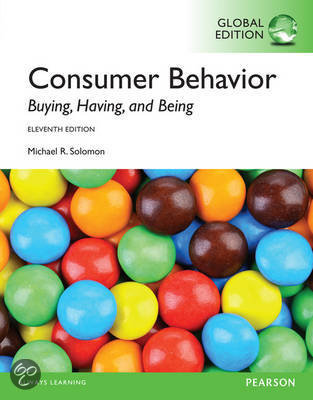Samenvatting
Summary 2nd Midterm Marketing, Consumer Behavior, Chapter 1 to 4, 11th edition, Michael R. Solomon
The summary is written with care and comes with high-quality images, tables and figures. The summary will be updated constantly, so please feel free to give feedback.
[Meer zien]














